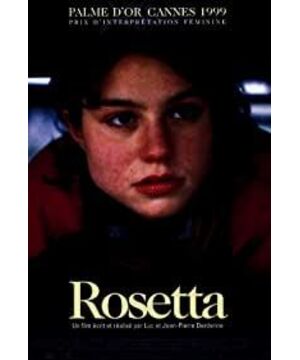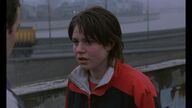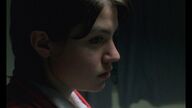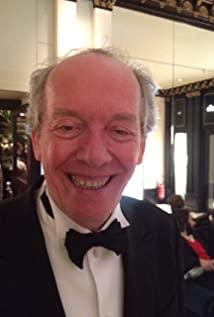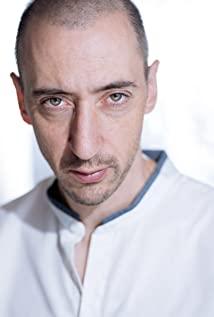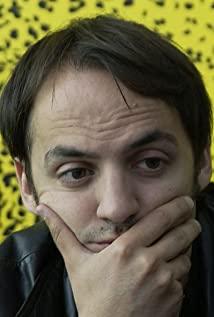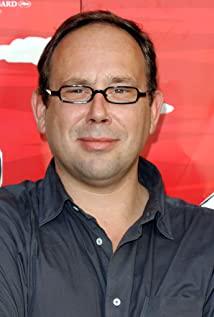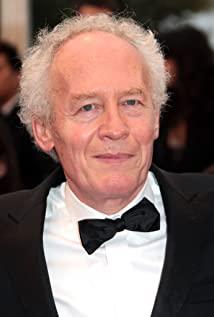Abstract: From the late 1990s to the present, the films of Jean-Pierre & Luc Dardenne have continued their labelled author style. The realism tends to be combined with minimalist narratives, expressing the exploration and thinking of human nature and society. And "Rosetta" ( Rosetta , 1999) is a typical masterpiece. The construction from image to narrative has taken a very clear and extreme road. It can be said that it established the image system of Darnet’s film while showing an internal Narrative features of "resistance". From the perspective of narratology, this article specifically analyzes the construction of the rebellious narrative of audiovisual elements and the social discourse that the film reveals behind this narrative feature.
"Rosetta" mainly tells the story of an unemployed girl who rushed around to find a job and live a normal life like everyone else, so that she collapsed under heavy pressure and was finally redeemed. The film continues the Dany brothers' attention to the marginal and low-level people in society, and their reflections on the social problems in Belgium and their hometown of Selin. At the same time, as the second part of their author’s film sequence, this film shows a clearer and more personal style construction than the first " La promesse " ( La promesse , 1996). Focusing on the narrative outside, observing the characters from a single perspective, presents a rebellious minimalist narrative feature. This feature is more or less manifested in subsequent creations (such as "Sons of Others" ( Le fils , 2002), "Bike Boys" ( Le gamin au vélo , 2011)). And the narrative discourse formed by this resistance is in the same line as the creative spirit and belief upheld by the director.
one. Rebellious characters and narrative
Rosetta, as the only protagonist of the film, has been an image of a rebel from the moment of appearance. In the first scene, she was hysterical after losing her job, questioning her colleagues and boss, using her body to fight against everything around her, and trying her best to resist when she was taken away by the police. This scene can be said to be the most intense and direct part of the film. It nakedly reveals Rosetta’s situation and reaction to things, her obsessive-compulsive personality, and the violence she suffered and how she was equally violent. Way to resist [1] . She also showed the same strong emotions when she lost her job another time. It was a scene where she was fired by the owner of the muffin shop at the midpoint of the film. This unemployment also directly led to Rosetta’s two betrayals of her friends in the second half. (The first time came from the unsuccessful mentality when he fell into the water, and the second time was to expose him more directly to replace his position), and triggered her final judgment on her own life. Rosetta’s resistance was born with her character. Resistance is action. Throughout the movie, it penetrates the back of her running across the road and over the fence. She changes shoes before returning to the "Grand Canyon" camp. During the repetitive actions, and the anger of seeing his mother's alcoholism and depravity, he was alert when facing the boy's help and even did not hesitate to get rid of his extreme mentality for work. She was isolated and isolated by the world around her, closed herself, eager to stay away from the cruel reality brought to her by survival, and at the same time was forced to face it all the time.
This kind of rebellious characters and actions are constructed by narrative at the same time, and there is a certain connection between the narrative rebellion and the Dannet brothers' experience in filming documentaries. They put the rebellious nature of the camera from the external reality that they could not control when shooting the documentary into the feature film, "shooting those things that resist us", "trying not to show everything, not to see all the things, the characters and them. The situation is still in the shadows, and this opacity and resistance give us real life and life to the objects we photograph." [2] This creative concept became the main element in the construction of the narrative of "Rosetta", that is, to create the character and her environment's "resistance" to the camera through a minimalist approach, and to directly resist the character through a documentary sense of reality. The essence of action [3] . This kind of "not showing" and "not seeing" everything is concretely expressed. The film directly throws out and shows a series of strong actions of Rosetta at the beginning of the film, and at the same time does not explain why work is so important to her; Luo Seta's continuous running, walking, and leaping movements, as well as survival items such as her carry-on bag and rain boots, tin boxes for fishing bait, and fishing bottles, exist almost without explanation and appear in the image; her face is expressionless. The act of peeking and peeking at first made it difficult to understand what she was thinking and doing, and even the frequent abdominal pain was only presented without direct explanation. The film almost exclusively uses showing rather than telling to prompt the causal connection of the plot, but this kind of demonstration does not deliberately show these connections and retains a lot of information. From this point of view, it has a characteristic of out-of-focus narrative, that is, the director as the narrator knows less than the characters, and forms a kind of "behaviorist" narrative [4] . The narrator seems to be standing in the position of the narrator (audience) at this time, trying his best to cancel his own discourse hegemony.
two. Audiovisual elements construct a rebellious narrative
(1) Sports long shots, close-up follow-up and color perception
From the perspective of visual expression, the film’s zero visual focus corresponds to the out-of-focus narrative. The camera observes the characters from a single external perspective. Hand-held photography and sports long lenses practice documentary aesthetics, and only cut when necessary. The aim is to minimize the manual manipulation of narrative by classic editing, the autonomy of images, and the time and space inside and outside the painting. The integrity guarantees the director's "resistance" construction of the narrative space in front of the camera. For example, in the long shot of the film 25'26'', Rosetta was training with the boss, and suddenly there was a knock on the door outside the painting. The shot did not show who was outside the door but moved to the left with Rosetta taking the flour. She passed by When the woman was around, the scene only showed a part of the woman's body and the communication between her and the boss. Almost all the information came from the voice-over dialogue. Then the camera continued to move to the right following Rosetta, and the background of the scene showed that the boss had walked in. Back in the room, and when Luo went to hold the flour again, the camera fully showed the woman's appearance and her position. A similar treatment also appeared in the 73'45'' long shot. Rosetta replaced the boy's work selling muffins on the first day. The shot was almost only directed at her, and only the voice-over dialogue and the partial back view of the foreground were used to show the customer and her. At the same time, her expression hinted at the appearance of the boy at the beginning, and his voice appeared outside the painting nearly a minute later. It was not until another 26 seconds that Rosetta handed him the muffin. The camera panned over and captured him. .
It can be seen that the camera moves almost completely following Rosetta’s actions, many close-ups and facial close-ups, shooting close to the body of the character but only a limited display of the surrounding environment, this way makes the audience closer to the character and the heart in the visual experience , Highlighting her position as the subject of action in the film. The closer the camera is to the actor, the more it collides with the opacity of the character, and the physical proximity brings a psychological distance. [5 ] Because even if it is close-up, it is almost an expressionless face of Rosetta (except for the emotional vent in the last shot). In addition, a large number of images with back to the camera also construct the psychological distance between her and the audience, conveying the gap between her and the environment.
The color of the film is dark, and the few street scenes also show a dark and decayed old industrial city scene, and among them are the highly saturated red of Rosetta's body. The eye-catching red and black areas on the sportswear she wore when she went out conveyed her tenacity, fierceness and impenetrable self-enclosedness, as if it were her combat armor. While facing the mental and physical torture in the Grand Canyon camp, her light green vest and blue sportswear had a quieter feeling, confessing her helplessness and pain when she lost her shelter. Color and clothing supplement part of the narrative function in the picture elements. This is in the director's other works such as the boy Cyril's red/blue T-shirt in "Boy Boy", "Two Days and One Night" ( Deux jours, une nuit , 2014), Marion Cotillard's glitter/green vest It also reflects a certain continuity.
(2) Narrative in voice-over
Corresponding to the complete construction of the long lens on the narrative space inside and outside the painting, the use of sound realizes the authenticity of the narrative space and opens up the narrative function of the space outside the painting. For example, the dialogue between the inside and outside of the painting hints at the existence of space outside the painting before the camera; the natural sound in the woods of the camp where Rosetta is located and the traffic and industrial sound around the city streets construct soundscapes in different time and space. ); The use of certain audio, such as the sound of the engine of a motorcycle and the hiss of a gas tank, directly participates in the narrative. In the film, when the boy appeared on the stage, he heard the sound of the engine of his motorcycle and then saw him, thus establishing the connection between the sound and him. After that, almost every time this sound appeared, it conveyed his or her presence next to Rosetta. Signs of intimacy or anger. For example, when Rosetta left home at night, chasing a figure riding a motorcycle far away on the road, the camera mainly used the sound of the motorcycle engine outside the painting to imply that the person she was looking for was a boy; Rosetta was chased after he revealed him. , And the long shot of buying a gas tank at the end, the sound of the engine also prompted the boy’s approach and directly conveyed his inner anger; Rosetta saw the caretaker ride away on the motorcycle-making the same engine sound-and then secretly After fishing, I mistakenly thought that the sound of the engine was from the administrator, so I quickly threw the bottle away, looked out of the painting and returned, suggesting that our sound came from a boy. At the end of the film, the hiss of Rosetta's boiled eggs prompts us to turn on the gas, and this connection directly constructs the narrative. Then the hissing sound appeared when she turned on the switch again after she finished peeling the eggs, and then closed the door to plug the cracks in the door, and continued until she was lying in bed and listening quietly. The hiss outside the painting clearly explained her suicide intention and process, until the hiss suddenly stopped suggesting that the gas ran out and she had to go out to buy. This process of emphasizing the function of sound narrative matches the film’s minimalist rebellious narrative. The parts that are not explained or rarely presented in the image are hinted and supplemented by sound. At the same time, the sound is naturally present in the environment, which in turn liberates The lens allows it to be completely close to the subject of Rosetta.
In addition, there is no soundtrack in the film, only rock music played by active recording is used when eating scenes and boys dancing, which contrasts with Rosetta’s resistance and anxiety at the time, so it is different from the director in other films where active music is more as a character The reflection of emotions. Efforts to abolish the effect of music on the character's emotional rendering and catharsis also played a role in the rebellious narrative that only retained the character's essential actions.
three. Resistance to social discourse
(1) Realism and the exploration of essence
In general, the film "Rosetta" has constructed its rebellious narrative features through unique audiovisual language techniques, and its techniques are prominently manifested in the use of documentary creation elements, handheld photography, live shooting, natural light, and performance by non-professional actors. A series of methods such as simultaneous sound recording, etc. construct a documentary-style image similar to a real movie. Its image style continues the European realism tradition of Italian neorealism films and British "kitchen sink" films, and also reflects the author's pursuit of realism in films after Dogma95. The content pursues a true expression of reality, depicts and cares about the survival and destiny of the people at the bottom, revealing a kind of leftist values.
However, although the film is a discussion of unemployment, its social/political discourse is not as obvious as in Ken Loach's film. The film is not like a traditional realist film. It filters out the intermediate links of causality and intends to directly touch the essence of a moral problem, allowing Rosetta to make a choice between survival and death under the predicament of unemployment. As mentioned above, the camera is close to Rosetta's body almost all the time, shielding the social environment around her. At this time, people are at the center of everything. She suppresses everything about herself and only reveals the signal in order to hide the symptoms. This frees the film from the realism that goes astray and advocates spreading things out. [6] This kind of social discourse takes human nature and human existence as a way of social research. At the same time, the blank space in the narrative actually contains the director's expectations for the audience, which triggers them to actively explore and think, that is, the less they do not reveal the cause of social injustice, the more they prompt people to think about its cruelty [7] . Reflecting on this, the film caused a huge response after the film was released, and the Belgian government promulgated the "Rosetta Plan" aimed at protecting the rights and interests of young people at work [8] . At the end of the film, Rosetta also brought human salvation to Rosetta. The scene was frozen on her tearful face, followed by a typical "Dane" moment.
(2) Single perspective aesthetics and the "face" of others
The social discourse of the film is also reflected in a single perspective throughout. Always staying next to Rosetta and maintaining a consistent perspective with her conveys the perception of a person who is rejected, and also implies a power relationship and social difference. First of all, this is a rejection of the equal dialogue relationship established by the forward-reverse shots, especially when the protagonist's class/status is at the bottom/edge of society. The phenomenon described by the aesthetics of a single perspective shows that social space is a battlefield, and everyone has to choose their own position. Secondly, the establishment of a single perspective lies in the recognition of differences and the irreplaceability between people. It is the distrust of the viewing mechanism and the elimination of sensationalism and sympathy through a kind of distance scene scheduling, that is, unwillingness to manipulate the audience. It is out of respect for the differences of the characters on the screen. [9]
This seems to embody the point of view derived from Emmanuel Lévinas that "the relationship with the face is directly ethical" [10] . In fact, the director really has been the impact on Levinas, "face to face", others face the "other" ethical philosophy [11] , such as the film for close-range and show a preference for close-up face, which amounted to It is also very obvious in the latter work "Son of Others". In Levinas's case, the other is no longer the other that can be absorbed and assimilated by the ego subject in traditional philosophy, but is an absolute other that is fundamentally outside of any ego and cannot be objectified. Therefore, the presence of the other relative to the self can only be a certain ethical encounter, that is, "face-to-face", and everything about the other is concentrated on the "face" (face, visage). The "face" of others means the resistance of others to my power and possession, and it inspires and summons my sense of responsibility to others. [12] The film creation of the Darnet brothers also contains this ethical spirit. The director focuses on observing/shooting characters with zero vision, creating a recording style of images, and constantly simplifying the narrative, thus integrating the characters and their narrative space and trying their best to highlight them. The character's otherness, the existence of "face" (ie close-up) is just a kind of "sign" of the otherness. It indicates the presence of the character relative to the camera/director and the subject's otherness. At the same time, it cancels and resists the manipulation and possession of the photographer and the viewer based on the presence of this otherness, and further allows the viewer subject to be in one place. A sense of responsibility is stimulated in the field of moral experience.
Throughout the film works of the Darnet brothers, they more or less contain the same narrative discourse, and similar forms and techniques reproduce the director's values and pursuits in terms of social relations, other people and subjects, humanity and morality. Their films are defiant and at the same time extremely gentle.
references:
[1] Bert Cardullo, Song Jiawei. Rebelling film: An interview with the Darnet brothers[J]. Art of Cinema, 2015(05): 130-137.
[2] Same as [1].
[3] Same as [1].
[4] André Godello, François Joste, Liu Yunzhou. What is film narration[M]. Beijing: The Commercial Press, 2005. p. 176.
[5] Jean-François Pigouly, Cao Yi. The Darnet Brothers and the New Era of Social Cinema[J]. World Cinema, 2016(04):156-160.
[6] Emmanuel Bourdo, Shan Wanli. Losetta: The Brave Pioneer──Comment on "Losetta" by the Belgian director Dardyna Brothers[J]. Journal of Beijing Film Academy, 1999(04) ): 15-18.
[7] Same as [5].
[8]Wang Jiayin. Workshop film in the post-industrial era—the image world of the Darnet brothers[J]. Art of Cinema, 2015(05): 119-129.
[9] Same as [5].
[10]Emmanuel Levinas. Totality and Infinity [M]. The Hague: Martinus Nijhoff Publishers, 1979. Quoted from Li Rong. Levinas: The Ethical Subject in the Perspective of the Other[J]. Academic Research, 2011(08 ): 20-25+35+159.
[11] Same as [5].
[12] Li Rong. Levinas's Ethical Subject in the Perspective of Others[J]. Academic Research, 2011(08): 20-25+35+159.
View more about Rosetta reviews


